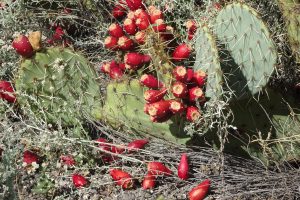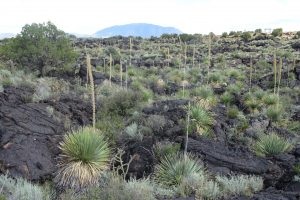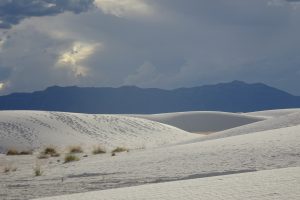19 Sep: Driving from Albuquerque toward White Sands, we looked for a good spot to stop for our picnic lunch and happened upon the Valley of Fires Recreation Area. A picnic area and campground there overlook one of the most recent lava flows in the U.S. (about 5,000 years ago). The Malpais Lava Flow erupted from a small vent (Little Black Peak) and spread for a distance of about 40 miles in the Tularosa basin, covering 125 square miles up to 160 feet thick in places. A self-guided nature trail took us over the lava and identified many of the plants and wildlife that have managed to colonize the flow, which still looks black and barren from a distance. This walk gave us a good introduction to several Chihuahuan Desert plants that we would see more of in days to come. One in particular, sotol, was especially prominent, with its yucca-like base and very tall flower stalk.



We arrived at White Sands National Monument late in the afternoon, with just enough time to go through the visitor center, drive the scenic road, walk a few minutes on some large dunes, and join a sunset ranger-led walk. White Sands is the world’s largest gypsum dune field. The grains of gypsum resulted from weathering breakdown of selenite crystals. The ranger leading our walk pointed out a white lizard, adapted to living on these pure white dunes.

